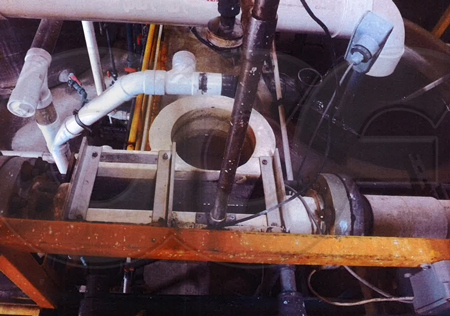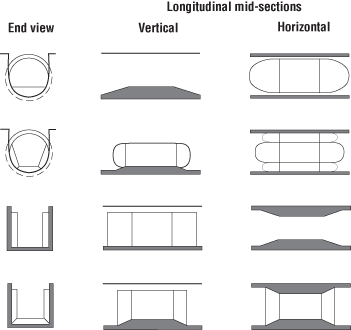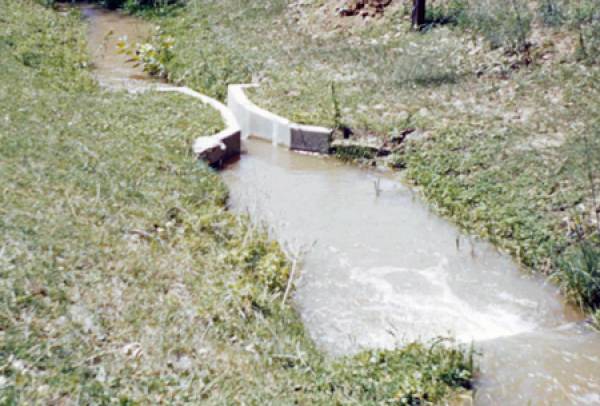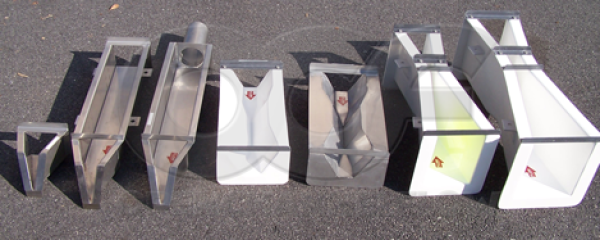This website uses a variety of cookies, which you consent to if you continue to use this site. You can read our Privacy Policy for
details about how these cookies are used, and to grant or withdraw your consent for certain types of cookies.
Advantages of Palmer Bowlus Flumes
 Originally developed in the 1930’s as a simple and effective way to accurately measure sanitary flows in pipes and conduits, the Palmer Bowlus flume has the second most popular open channel flow measuring flume.
Originally developed in the 1930’s as a simple and effective way to accurately measure sanitary flows in pipes and conduits, the Palmer Bowlus flume has the second most popular open channel flow measuring flume.
Simple Design
The developers of the Palmer Bowlus flume – Harold Palmer and Fred Bowlus – wanted a design that would be simple to construct and that could be used in line with (or inserted into) existing conduits.
The flume is essentially a restriction of the channel through the use of a raised ramp as the throat. The flume is U-shaped in cross-sections (other than at the throat), making the connection to upstream / downstream pipping simple. The flumes are generally sized to be used with the same size pipe as they are connecting to (although occasional an operator may go up / down one flume size to ensure the flume is operating where it is most accurate).
This simple design means that the flume is relatively cheap in comparison to other flume types, particularly when pipe end connections are included.
Ease of Installation
The Palmer Bowlus flume does not require a drop in elevation through the flume….all that is required is that the flume be set level. The inlet / outlet inverts are the same, meaning that it is easy to install the flume on existing piping.
Variability of Throat Cross-Section
Unlike some other flumes (Parshall, Cutthroat, etc.), the design of the Palmer Bowlus flume is not entirely standardized. While the main cross-section of the flume is U-shaped, the throat of the flume can be tailored to meet certain flow needs.

The most common non-trapezoidal throat is the vertical sidewall throat. This throat style provides better low flow range than the more common trapezoidal throat (although at the expense of top end flow rate).
Adaptable Point of Measurement
As a long-throated flume, the Palmer Bowlus does not have a single, fixed primary point of measurement as short-throated flumes do. So long as the level measurement is take upstream of the drawdown zone of the throat (D/2 upstream of the throat), the level can be taken where it is most convenient. This can be useful is the D/2 location is obstructed or if the flume is accidentally installed backwards.
Dimensionless Scale
As a long-throated flume, the Palmer Bowlus design is dimensionless – knowing only one dimension (the throat width) all other flume dimensions can be determined. This is not the case with most other flumes (the Parshall flume in particular), which, while similar in layout, are not scale models of each other.
Variety of Styles
Four distinct styles of Palmer Bowlus flume have been developed over the years: some for permanent, inline installations and some for retrofitting into existing pipes.
Resistance to Submergence
Like other long-throated flumes, Palmer Bowlus flumes have excellent resistance to the effects of submegence - with submergence transitions of 85-90%.
Image: Teledyne Flow Measurement Handbook
Related Blog Posts
Explore more insights in our blog.

LOCATIONS IN ATLANTA, GA & BOISE, ID




